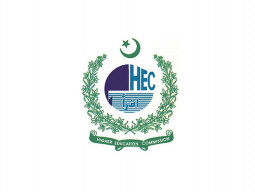
As witnessed in many parts of the world, ranking is employed as an instrument to scale the performance measure of an institution on a relative scale. It is conservatively aimed to inform the stakeholders (and the society at large) about the standing of various institutions; specific reasons behind the relatively better or worse performances; potential case studies for replication based on success stories and a support instrument for the respective stakeholders to realign their goals and strategies. Universities and degree awarding institutions, being the prime knowledge dissemination mechanisms, benefit greatly from such exercises. However, looking at the past performances of Pakistani universities and the endemic conditions that are all vital to be considered, a cautious approach for classification and ranking evaluation must be worked out.
In contrast to the universities in the developed countries, decision-making by the incoming students to join an institution is influenced by very different considerations. It is not necessarily the academic quality or performance that helps in making such choices. Public sector universities open admissions to residents of the same division/district or assigned locational parameters. It is next to impossible for an aspirant from Turbat to study in the University of Punjab or vice versa under the usual scheme of admissions. Well aware of the captive clientele, some of these universities do not attempt to enhance their academic potential. Employability, which is confined to some disciplines, is also a very important consideration. Such disciplines which are in market demand are chosen, even if the quality of instruction or research is not up to the mark. For this reason, many well-performing departments in social sciences and humanities are not able to attract bright students. On the contrary, computer and information technology or telecommunications-related departments are flocked by hundreds — certainly not always due to the overall teaching quality in those places. This factor becomes a prominent characteristic in labeling a ‘good’ and ‘not so good’ academic outfit. For instance, a department teaching a local language and literature is looked down upon, irrespective of its teaching and research capabilities. Many private universities only use ranking status as a high flaunting point to entice students from wealthy backgrounds for keeping their balance sheets in order!
Quality of teaching is one of the most important factors that has a bearing on a university’s performance. A campus which attracts capable and competent teachers truly adds value to the quality of graduates that serve the society in various capacities. However, measuring and scaling teaching quality is an uphill task and can only be performed by specialist social scientists or related experts. It is not quite clear as to how the institutions conducting ranking exercises evaluate teaching standards. Some critics argue that many variables pertinent to teaching are neither quantifiable nor evidently detectable at the very onset. They may show their worth after a few years of internalisation by the recipient body of students.
Significant importance is placed on self-assessment in ranking exercises done by national institutions such as the HEC. However, the criterion of self-assessment needs to be thought about objectively. In a culture where boasting of non-accomplished feats is a common practice, it is possible that such exercises may not generate the expected results. Some form of peer review with properly laid down parameters is an important pre-requisite. This review must remain unbiased, neutral and task oriented — an uphill task indeed. The only possibility of making this happen is to initially detach the determination of ranking status from the various administrative decisions. The exercise should constitute a process that leads to avenues of improvement in a proactive and constructive manner.
We need to build the edifice of rankings through an independent body at the national scale. The HEC, in consultation with concerned stakeholders, may consider such a body to conduct the future ranking exercises. The purpose and objectives of such an attempt must be clearly laid down. After internal review, these outlines may be firmed up and finalised through intellectual consensus and stakeholder consultation. The determination of ranking must comprise teaching standards, research publications, quality of academic services and the interface with industry/market/society. The statutes governing the routine functioning of each university/institution are well-formed. The prescriptions for performance determination are clearly laid down in them. Every university may be encouraged to come up with a self-assessment report covering these aspects. External support for detailed review and analysis may be sought whenever required. However, external input must be such that it helps the concerned university/institution take steps towards improvement.
It may be rationally expected that the said ranking may be used as a starting point in order to review the conditions and performance of universities. This shall help identify common problems of the universities as well as specific problems as observed in individual cases. This strategy can evolve a support criterion for the universities whereafter they can become worthy for any internal or external assessment.
Published in The Express Tribune, July 16th, 2014.
Like Opinion & Editorial on Facebook, follow @ETOpEd on Twitter to receive all updates on all our daily pieces.
COMMENTS (5)
Comments are moderated and generally will be posted if they are on-topic and not abusive.
For more information, please see our Comments FAQ










































The good doctor has correctly hit the right notes. Objectivity and standardization for precise & accurate evaluation as well as the changes to be done in light of those....all are important for improvement.
" The determination of ranking must comprise teaching standards, research publications, quality of academic services and the interface with industry/market/society ".........I can think of none other than LUMS.
"Employability, which is confined to some disciplines, is also a very important consideration" - It is true for all of the world not only in for Pakistani universities.
HEC is funding body to Pakistani universities and how come HEC rank these universities. It is conflict of interest. In fact, independent organisation should rank Pakistani universities and see whether HEC huge investment in these universities are justified.
Some interesting points raised. However I doubt anybody takes the HEC rankings very seriously (or at least anybody outside the academia)
Pakistan need to have atleast 50 universities in top 100...cheers to pakistan.......Future is of pakistan and world will see every patent in future from pakistan..every book from pakistan..and every man that will land on moon and mars will be from pakistan...just see ...my deadline 2020..zaid hamid deadline 2022.......